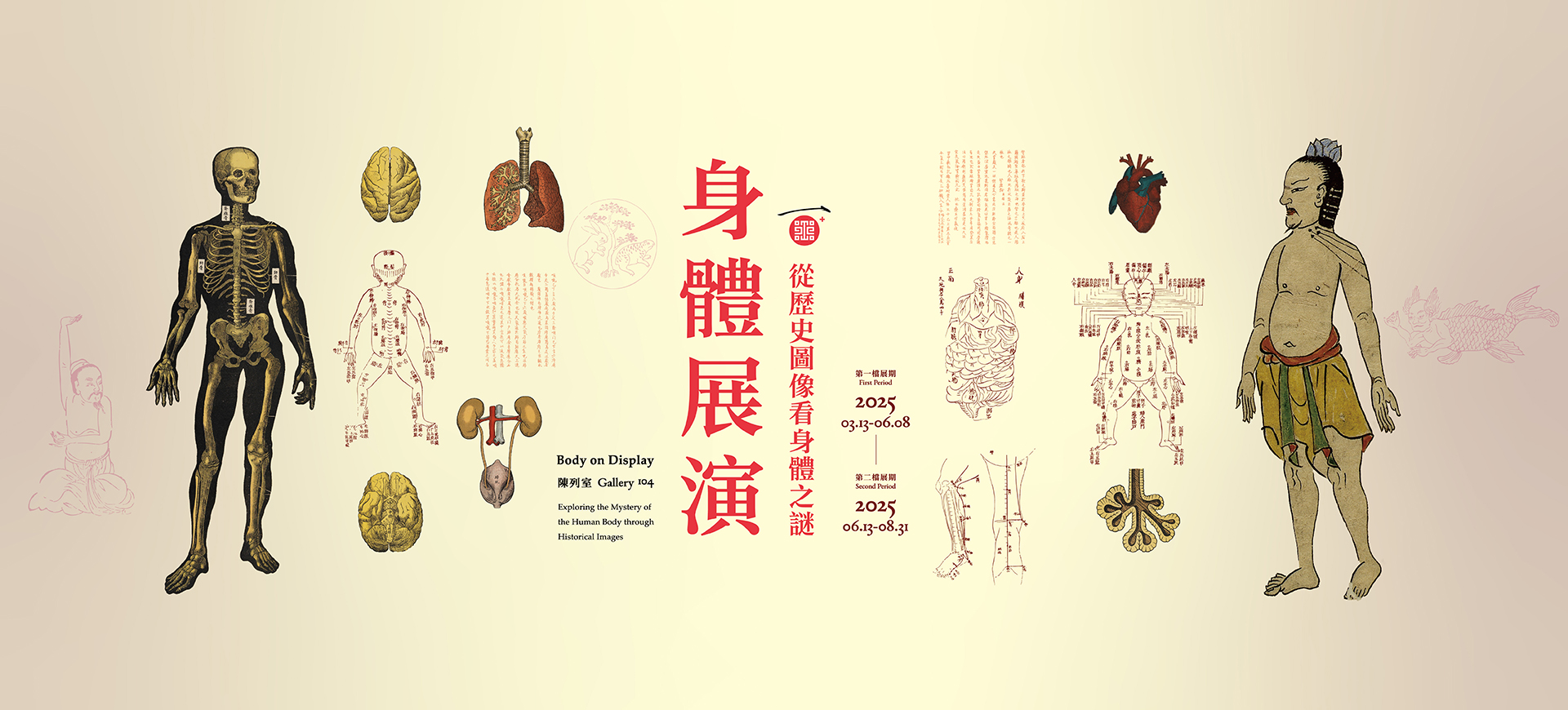Body Discipline
The Regulation of Bodies by Political Power
Political power uses gestures and rituals to discipline the body, enforcing obedience and conveying authority. This exhibition features Yuzhi Xinji Duanyi Jingcui (Imperial Edition on the Interpretation of the Yi Jing), showcasing divination poems and illustrations, and the “Pingding Yili Huibu Tu (Illustrations of the Pacification of the Yili Muslim Rebellion)” series, including the “Kaiyan Chenggong Zhujiangshi Tu (A Victory Banquet Given by the Emperor for the Distinguished Officers and Soldiers).” In these artworks, officials kneel before the emperor, symbolizing submission to power and hierarchy. Also featured is an image reprint from the Biblioteca Apostolica Vaticana’s (Vatican Apostolic Library) Bunsho No Soshi, depicting a scene where a higher-ranking figure sits elevated, while a lower-ranking individual kneels below, illustrating obedience through posture.
Physical Punishment and Bodily Restraints in Legal Systems
For maintaining social order and power, rulers and judicial authorities have used punishments and restraints to inflict pain or restrict movement. Ropes and shackles limit mobility, while corporal punishment harms the body or leaves marks. Some restraints evolved into cultural rituals, like those in Chiayi City God Temple’s blessing ritual and the Donggang King Boat Festival, where people symbolically wear restraints for blessings. Today, these restraints are often made of paper, which is burned at the end of the ritual, symbolizing the removal of sins and the cleansing of past karmas.
The Body’s Restraint under Ritual Order
-
Xinbian Zuantu Zenglei Qunshu Leiyao Shilin Guangji
(The Newly Compiled Illustrated Encyclopedia of Daily Affairs)
Xiyi Shoutu (Diagram of Practicing Ritual Gestures) and Xizhi Yitu (Diagram of Practicing Formal Salutes)
Written by Chen Yuanjing, Song dynasty
Imprint by the Chunzhuang Academy in Jian’an in the Zhishun reign (1330–1333), Yuan dynasty
故善004363-004374Traditional Chinese greeting rituals vary by social context, with different gestures reflecting hierarchy and order. These rituals impose physical rules and posture constraints, limiting movement to reinforce social structure. Xinbian Zuantu Zenglei Qunshu Leiyao Shilin Guangji (The Newly Compiled Illustrated Encyclopedia of Daily Affairs) details various greetings, such as Chashou (respectful hand gesture), Zhiyi (Respectful bow with clasped hands), and Zhanbai (kneeling bow). Through repeated practice, these movements train the body, internalizing ritual norms and making bodily discipline a part of daily life.


